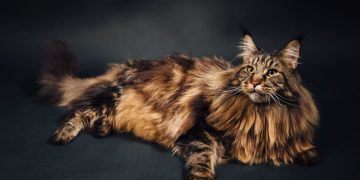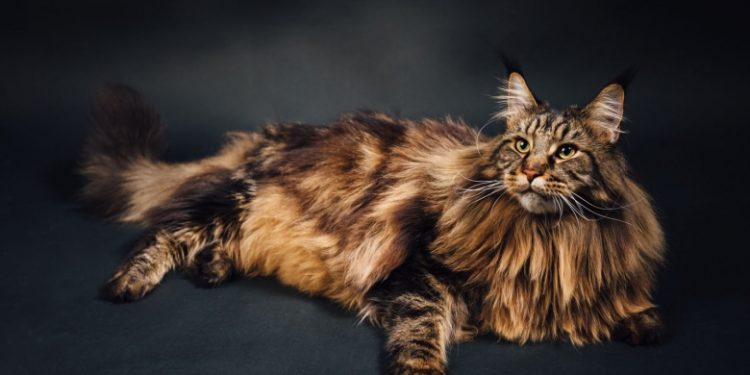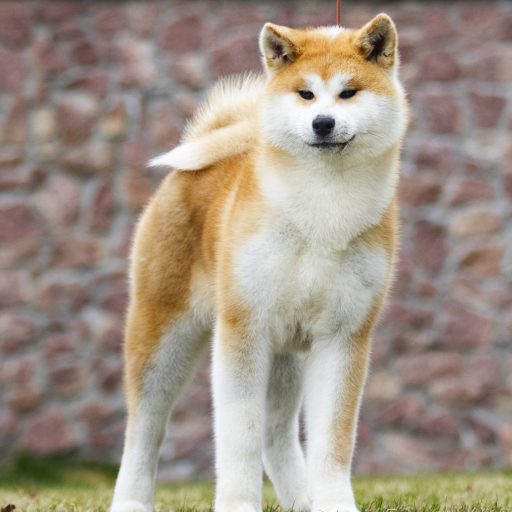The Maine Coon is, along with the Savannah, one of the largest cat breeds. Its length can easily exceed one meter. Most of the world’s largest cat record holders who have entered the Guinness Book or are about to do so are Maine Coons: Leo (Verismo Leonetti Reserve Red), Barivel and his 120 cm, Stewie (Mymains Stewart Gilligan), among others . The Maine Coon is also a soft-hearted giant, who prefers cuddles and quietness to strenuous activity. He is a most pleasant companion, including for children and his congeners.
Breed History
The ancestors of the Maine Coon would be long-haired cats that arrived with the first Europeans who settled in America. Among these animals, the most resistant managed to adapt to the harsh climatic conditions of the region corresponding to the extreme northeast of what is now the United States, and more precisely the state of Maine. Hence the name of the breed. According to other sources, the ancestors of the Maine Coon would have been brought to the American continent long before by Viking explorers.
More and more farmers in the region became interested in the Maine Coon, which they appreciated as much for its beauty as for its ability to drive away pests. From the second half of the 19th century, representatives of the breed began to be presented at cat shows.
After a long period marked by a certain lack of interest for the Maine Coon, in particular in favor of the Persian, the breed regained its letters of nobility from the 1950s. It was also at this time that its first club was was founded in the United States: the Central Maine Coon Cat Club. 20 years later, the Maine Coon breed was recognized by the Cat Fanciers’ Association (CFA), a major feline club across the Atlantic. The International Feline Federation (FIFe) recognized it, in turn, in 1983.
In France, it was in the early 1980s that we witnessed the arrival of Maine Coon cats. Its popularity in France accelerated from the following decade, to the point that the breed has now become the favorite of the French, ahead of the Sacred Birman and the Bengal in particular.
Physical peculiarities
Its body: of impressive length, it fits in a rectangle. Besides its large size, it is characterized by a well-developed musculature and a broad chest. Overall, it remains balanced in its proportions.
His hair: medium to long, it forms a collar under the throat. Its length is less at the level of the shoulders and the thighs, and more important on the abdomen. Silky, the outer coat is associated with a fine undercoat.
Its color: apart from chocolate and lilac, all coat colors are allowed, including “tabby” (tiger) coats.
His head: medium in size, the skull is slightly rounded, with well-marked cheekbones, a high and moderately round forehead, as well as a square muzzle.
His eyes: large, almond-shaped, set well apart, in a wide variety of colors. In white coated cats, blue or minnow eyes are allowed.
His ears: set high, wide at their attachment and large in size, they are generously covered with hair and characterized by plumes. This gives the cat a highly sought-after “lynx tips” appearance.
Its tail: long, covered with long hair, it is wide at its attachment and is pointed at its end.
Feed
The Maine Coon reaches its adult size around 4 or 5 years old. He must therefore eat more kitten food when he is young, based on kibble with a high percentage of nutrients. Thereafter, its diet consists largely of animal protein such as meat and fish. Regarding the latter, sardines, for example, are to be preferred to tuna, which may contain more heavy metals.
In addition, the water needs of the Maine Coon are important. Thus, it may be a good idea to combine dry (kibble) and wet (food); the first will contribute to prevent the formation of tart, while the second will participate in the hydration of the cat. Without forgetting, of course, to leave a source of fresh, clean and regularly renewed water at his disposal (bowl or fountain).












